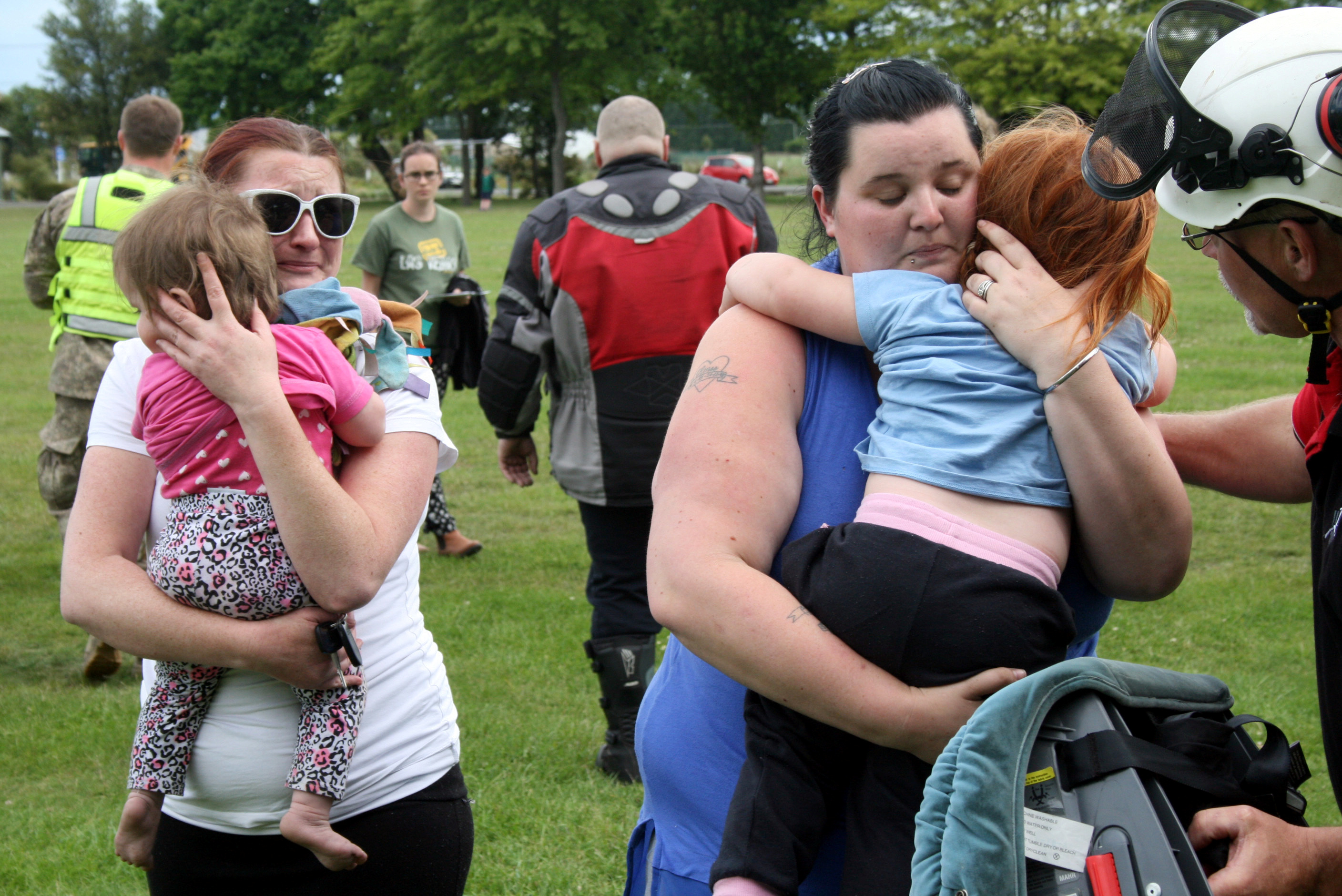Image: Evacuees formerly stranded in the earthquake-affected town of Kaikoura stand alongside the helicopter that brought them to the town of Woodend, near Christchurch, New Zealand, November 16, 2016.
By Lincoln Feast
CHRISTCHURCH, New Zealand (Reuters) – Hundreds of survivors stranded by a huge earthquake that struck central New Zealand three days ago reached Christchurch by a naval ship early on Thursday, as engineers in the capital Wellington assessed the state of dozens of damaged buildings.
Around 450 tourists and residents from the small seaside town of Kaikoura were taken by the New Zealand navy’s multi-role vessel HMNZS Canterbury to Christchurch, the South Island’s largest city, overnight.
Kaikoura, a fishing community and popular whale watching base ringed by steep mountains, was completely cut off by large landslides which covered road and rail links.
Air Force NH90 helicopters joined a fleet of private helicopters which have ferried hundreds more people from the town to near Christchurch, 150 km (90 miles) south over the past two days.
Workers cleared an emergency inland road into Kaikoura, allowing water and other supplies to be trucked in for the first time.
Two people were killed and dozens injured by the magnitude 7.8 quake — two nearly simultaneous tremors which ruptured faultlines across the top of the South Island.
The quake rocked much of the country, stirring memories of the 6.3 magnitude Christchurch tremor that killed almost 200 people in 2011.
The timing of the quake – shortly after midnight on Sunday – combined with the epicentre being in a sparsely populated region prevented a higher toll, authorities said. A tsunami alert that followed sent many rushing for higher ground before the threat was lowered.
In Wellington, authorities said as many as 60 buildings had suffered structural damage, including properties housing Statistics New Zealand and the Defense Force.
Another multi-storey building near the parliament building would have to be taken down, engineers said.
The capital is bisected by several fault lines, and large areas of its business district are built on reclaimed land, raising questions about building practices in the capital despite some of the world’s strictest codes.
“There are some sites that are really not suitable for certain types of structures. For example, I would seriously think about putting a hospital or essential services on reclaimed land,” Paul Campbell, the president of the New Zealand Structural Engineering Society told Radio New Zealand.
The force of the tremor was most evident in the upper South Island, where parts of the coast moved metres and geological features were altered.
Civil Defense officials warned people to stay away from the Hapuku River, where landslides from the earthquakes had blocked the river.
“There is a 150m high dam caused by the earthquakes which could rapidly fail, spilling water and debris from the new ‘lake’ over (or through) the dam due to heavy rain and building pressure,” Civil Defense Canterbury said on its Facebook page.
Storms lashed the region on Thursday and seismologists were still recording hundreds of aftershocks – some 2,000 have rattled the region since the initial tremor shortly after midnight on Sunday.
(Editing by Richard Balmforth)
Copyright 2015 Thomson Reuters. Click for Restrictions.


